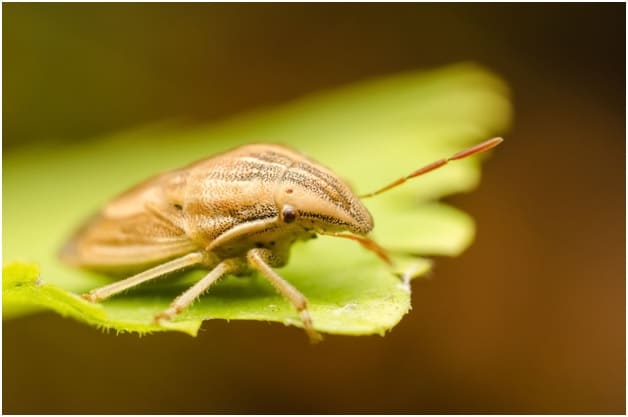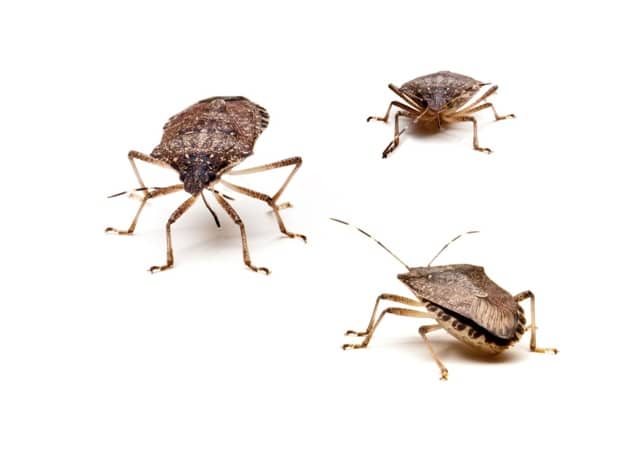If It’s Recreational Season, It’s Stink Bug Season: Know Your Enemy

Long a pest in Eastern Asia, the shield-shaped brown marmorated stink bug has finally made its way into the U.S. and Canada. It was first discovered in Pennsylvania in the late 1990s, but soon made its appearance in Canada, as well (the first bug was detected in Hamilton, in 2012). Since then, sightings of the bug have been reported all over Canada, including Ontario, Ottawa, Vaughan, Windsor, Niagara-on-the Lake, Fort Erie, and several other municipalities.
Why Should We Fear It?
While the stink bug doesn’t bite or sting humans and causes no structural or esthetic damage to properties, it is considered a nuisance pest due to the fact that it feeds on a wide variety of vegetable crops, fruit trees, and ornamental flowers. Their initial menu is comprised of grass and weeds, but as they grow older, they move into crops (sorghum, field corn, soybeans, and cotton) and orchards. When they land on fruit trees, they feed on apples, figs, citrus fruit, berries, and peaches (including stems and leaves), but won’t say no to beans or pecans, as well.
According to CBC News Network, in 2010 alone, the stink bug caused $37 million in losses to the U.S. Apple Association, but experts believe the insect threatens over $20 billion worth of crops in the United States. However, no one can say with certainty what the total loss to the agriculture industry amounts to, considering the stink bug uses over 170 plants for food and reproduction.
Both nymphs and adults use their mouth to perforate leaf and fruit skin, injecting a digestive enzyme that facilitates nutrient extraction. Damage is especially problematic whenever bugs feed on developing fruit, which can cause deformation and discoloration of the fruit, death of buds, delayed maturity, leaf stippling, and missing or stained seeds. For grapevine clusters, stink bugs act as contaminants, because they stick to the fruit and get crushed in wine presses, which can ultimately ruin the wine.
Aside from the injury and damage it causes to crops, the stink bug has one last – and obvious – downside: it stinks. These insects get their name from the foul odor they emit each time they are disturbed or feel threatened, acting as a deterrent against predators. The smelling-socks-like noxious odor is released by their scent glands, found on their abdomen between the front legs, and can become unbearable if dozens release their stink at the same time.
Stink Bugs Like It Inside, Too

As much as they love the great outdoors, where they can find plenty of food, it is common for stink bugs to find their way inside homes, apartments, condominiums, office buildings, etc., once the weather starts getting cold. They typically move indoors in the fall, to search for light and warmth – and, ideally, a place to spend the winter. They’ll choose the less trafficked areas of the house, such as the attic or inside and near doors and windows, causing severe infestations within Canadian homes.
Unfortunately, they can congregate literally anywhere inside the house, including beds, bookcases, and behind baseboards. Here are a few tips to help you manage and effectively control stink bugs indoors:
- Stink bugs are usually loners, so you’re unlikely to find them in large numbers. If you spot one or two around the house, don’t squish them. Slowly pick them up using a tissue (they are slow, so you’re not going to have any problem catching them) and either throw them in the toilet or drop them in rubbing alcohol or vinegar.
- During summer, place screens over windows and doors and cover up vents to discourage adult bugs from entering your premises.
- If you find them in larger numbers in the attic or crawlspaces, an efficient removal can be achieved with a store vacuum. Do not consider using your vacuum cleaner, because you will never get the smell out. A shop-vac is smaller and easier to clean.
- Remove debris or dead leaves from near the home foundation to prevent bugs from discovering potential points of access.
Remove Them Safely from Inside Your House
Some pesticides have been proven effective in removing larger populations of stink bugs when used in outdoor perimeters. Aerosol-type sprays or foggers specifically formulated for stink bugs may also prove somewhat effective, but only in the long run (most are not particularly effective). The best way to prevent an infestation is prevention, but if it’s already too late and stink bugs have taken control of your property, a pest control professional may aid in eliminating current infestations and preventing future problems.
About the Author
Daniel Mackie, co-owner of Greenleaf Pest Control, is a Toronto pest control expert well-known as an industry go-to guy, an innovator of safe, effective pest control solutions, and is a regular guest on HGTV. Mackie, along with business partner Sandy Costa, were the first pest control professionals in Canada to use detection dogs and thermal remediation for the successful eradication of bed bugs. In his free time, he is an avid gardener.



You must be logged in to post a comment.